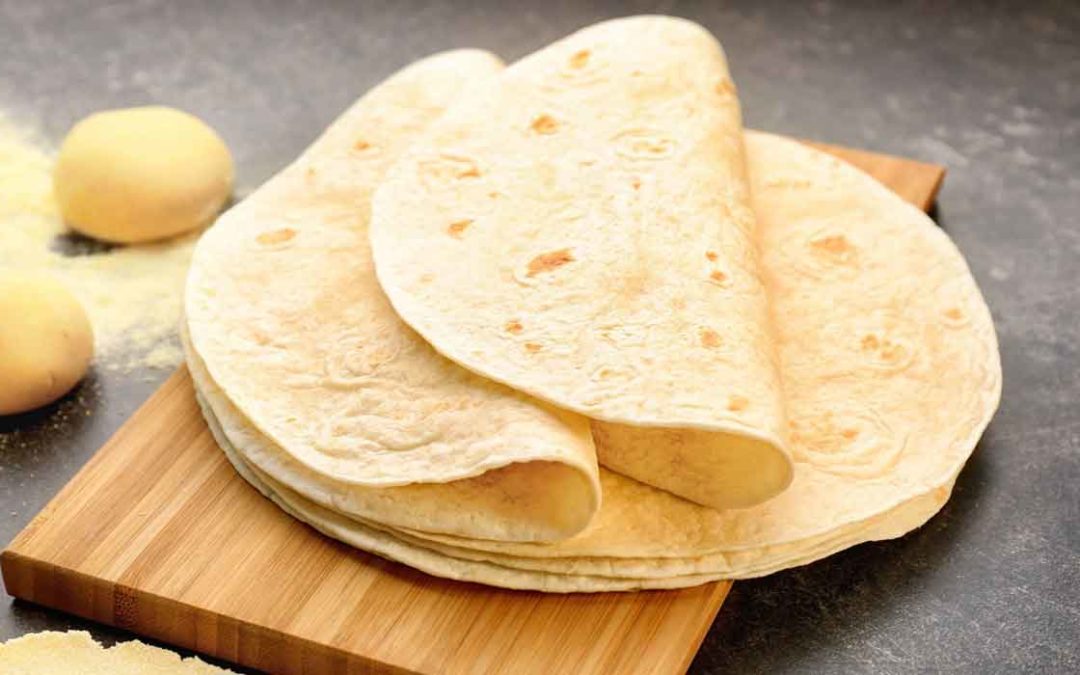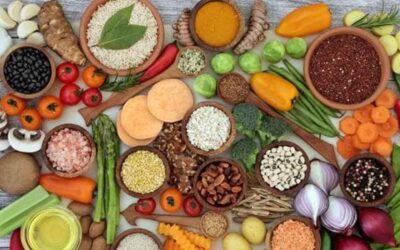A chapati or a tortilla is one of the most commonly eaten types of bread in India & many other Asian countries. In India, chapati is mostly prepared by mixing whole wheat flour and water to make a smooth dough. After that, a small piece of dough is taken & cast into a spherical shape with both hands. Then, the spherical dough is pressed with a roller to make round and thin chapati. The chapati is then cooked on a flat-surfaced utensil like a pan, commonly known as a Tava. Chapati is loaded with various essential nutrients like Vitamin Bs, and minerals like iron, phosphorus, potassium, calcium, and magnesium, etc. To get a better idea, let’s check out the approximate values of nutrition in chapati.

Chapati nutritional value
Chapati Nutritional Value Per 100g
Here are the approximate numbers for homemade chapati nutritional value per 100g, especially the chapati calories.
| Chapati Nutrition Per 100g |
| Calories – 340
Protein – 12.5g Fiber – 11g Total Fat – 2.1g Saturated Fat – 0.1g Polyunsaturated Fat – 1g Unsaturated Fat – 0.1g Total Carbs – 72g Sodium – 0.002g Potassium – 0.36g |
Nutrition & Calories In 2 Wheat Chapatis
Here are the nutritional values, especially the calories in 2 wheat chapatis. These values are for two common Indian homemade chapatis without ghee or oil.
| 2 Whole Wheat Chapatis Nutrition Advertisement
|
| Calories – 112
Protein – 4.5g Fiber – 1.6g Total Fat – 0.3g Saturated Fat – 0g Polyunsaturated Fat – 0g Unsaturated Fat – 0g Total Carbs – 12g Sodium – 0g Potassium – 0.06g |
Nutrition & Calories In Chapati With Ghee
In most of chapati eating countries in Asia, people love to spread ghee or oil on the top of cooked chapatis. This makes a little bit of difference in the nutritional values, especially calories in a chapati with ghee. So let’s check out the approximate values of nutrition in one ghee chapati.
| 1 Wheat Chapati With Ghee |
| Calories – 130
Protein – 3g Fiber – 1g Total Fat – 3g Saturated Fat – 0g Polyunsaturated Fat – 0g Unsaturated Fat – 0g Total Carbs – 21g Sodium – 0.082g Potassium – 0g |
Health Benefits Of Wheat Chapati

Whole wheat chapatis offer a wide range of health benefits due to their high nutritional value. It’s also known as ‘roti’ in many of the Asian countries. For centuries, these have been a staple food for Indians and other south Asian people. Wheat is one of the most widely grown crops around these countries. Thus, it is readily available for everyone and it’s very easy to cook. Furthermore, you can eat a wheat chapati with various cuisines, gravy dishes, and even fill the chapatis with grated veggies. So let’s find out the health benefits of eating whole wheat chapatis regularly.
- Improves Digestive Health – A wheat roti is a great source of soluble dietary fiber, which helps in boosting the digestive system. Also, this fiber takes a longer time to be absorbed and digested, which is why you feel full for long. Furthermore, it even helps in alleviating digestive disorders like constipation.
- High Nutrition – As explained earlier, a wheat roti is filled with essential nutrients that keep our body healthy. These nutrients include Vitamin (B & E), carbohydrates, and minerals like iron, phosphorus, potassium, calcium, and magnesium. Thus, it offers a great amount of required nutrition to our body daily. Also, due to low calories in wheat chapati, you can eat it daily as well.
- Provides Energy – As per several medical studies, there are ample amounts of carbohydrates present in a wheat roti. These carbs play a very essential role in providing our body with energy and even elevate our moods. Also, these carbs keep your stomach full for longer to keep you recharged.
- Healthy Skin – Eating a wheat chapati is good for your skin because of the presence of several skin-friendly minerals like zinc.
- Low Calories – A whole wheat chapati with no ghee or oil spread on it is very low in calories. Furthermore, the dietary fiber and carbs keep your stomach full for a long time. Thus, eating these regularly can help in weight loss and management due to low calories in wheat chapati.
Nutrition & Calories In 1 Corn Chapati

Apart from wheat flour, many people in India and other Asian countries use various other grain flours to make chapatis. One of the most commonly used options to cook highly nutritious and delicious chapatis is cornflour. Corn flour is an excellent source of dietary fiber, protein, vitamin Bs, and minerals like magnesium, iron, and potassium, etc. Let’s check out the amount of nutrition, especially the calories in 1 corn chapati.
| Nutrition In 1 Corn Chapati |
| Calories – 170
Protein – 5g Fiber – 5.5g Total Fat – 5g Saturated Fat – 2g Polyunsaturated Fat – 0g Unsaturated Fat – 0g Total Carbs – 35g Sodium – 0.24g Potassium – 0g |
Health Benefits Of Corn Chapati
Corn flour or corn chapati is a highly nutritious food option for everyone. Thus, it offers a long list of health benefits offered by cornflour chapatis.
- Improves Digestion – The fiber content in the corn chapatis is very helpful in improving our digestive health. This is because the soluble dietary fiber helps in regulating our bowel movements. Also, dietary fiber takes time to get absorbed by the body to prevent overloading the digestive system. Also, this helps in treating digestive system problems like constipation.
- Body Energy – Corn chapatis are a great source of healthy calories and carbs, which help in boosting the body energy. Thus, you are able to perform day to day physical activities with ease and comfort.
- Weight Loss & Muscle Building – Due to low calories and high fiber content, cornflour roti is a great option to lose weight. This is because the dietary fiber helps in keeping your stomach full for a longer time. Thus, you eat less throughout the day and end up losing weight. Also, cornflour chapati is a great source of protein, which helps in muscle building.
- Cholesterol Management & Heart Health – According to various medical studies, cornflour chapatis help in managing cholesterol due to high fiber content. Furthermore, corn chapatis are very effective in lowering the chances of heart disorders by decreasing LDL levels. Thus, the chances of heart-related disorders like stroke and heart attack decrease greatly.
- Treat Anemia – In several medical studies, corn flour was found to be beneficial in treating people with anemia problems. This is mainly because of the presence of iron in this whole grain.
The Bottom Line!
So this was everything you need to know about nutrition in chapati, for both whole wheat and corn options. There are many other flour options to cook chapatis like sorghum flour, gram flour, and rice flour, etc. You can always try these flours separately or combine them to make your chapatis more nutritious. However, it is highly advised to contact a licensed dietician to know the best diet options for you.
For any queries or suggestions, please write below in the comments section or email us.



